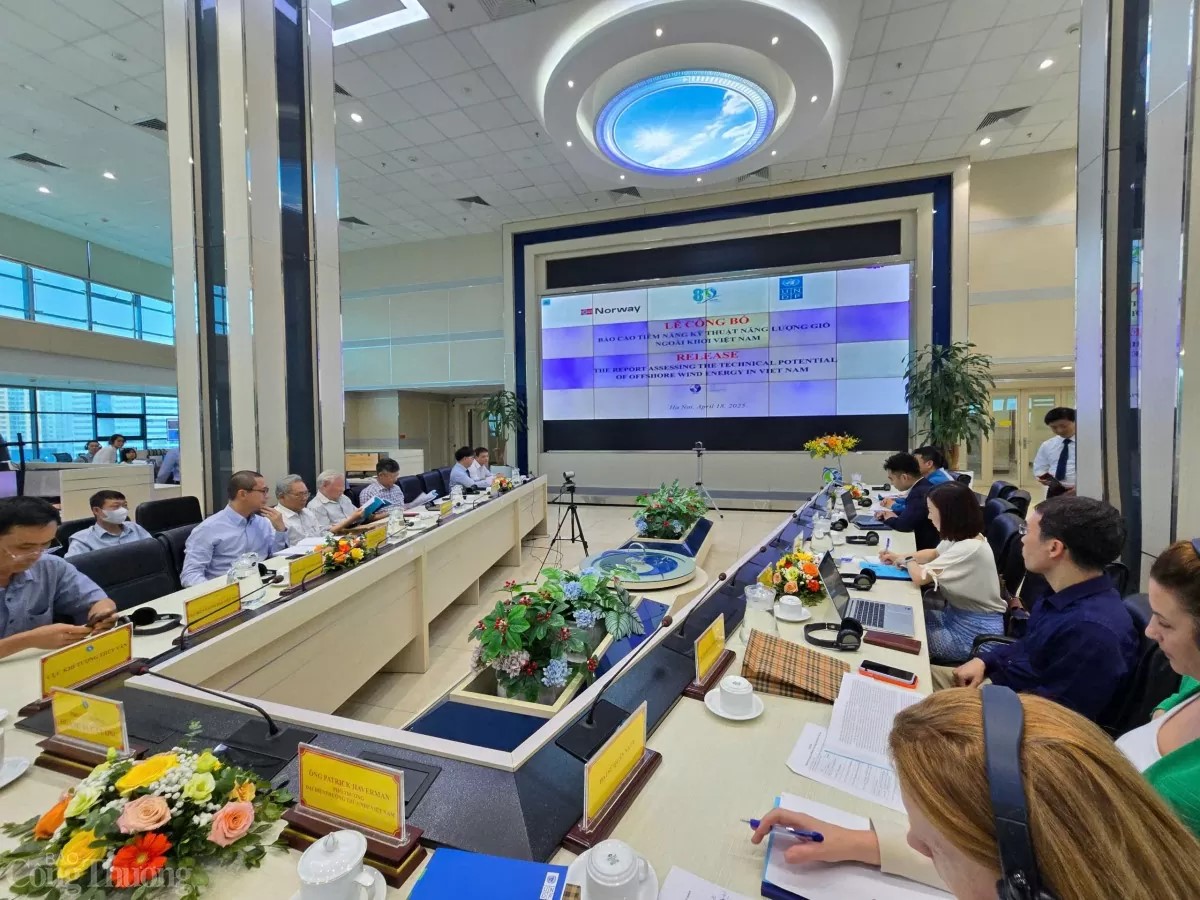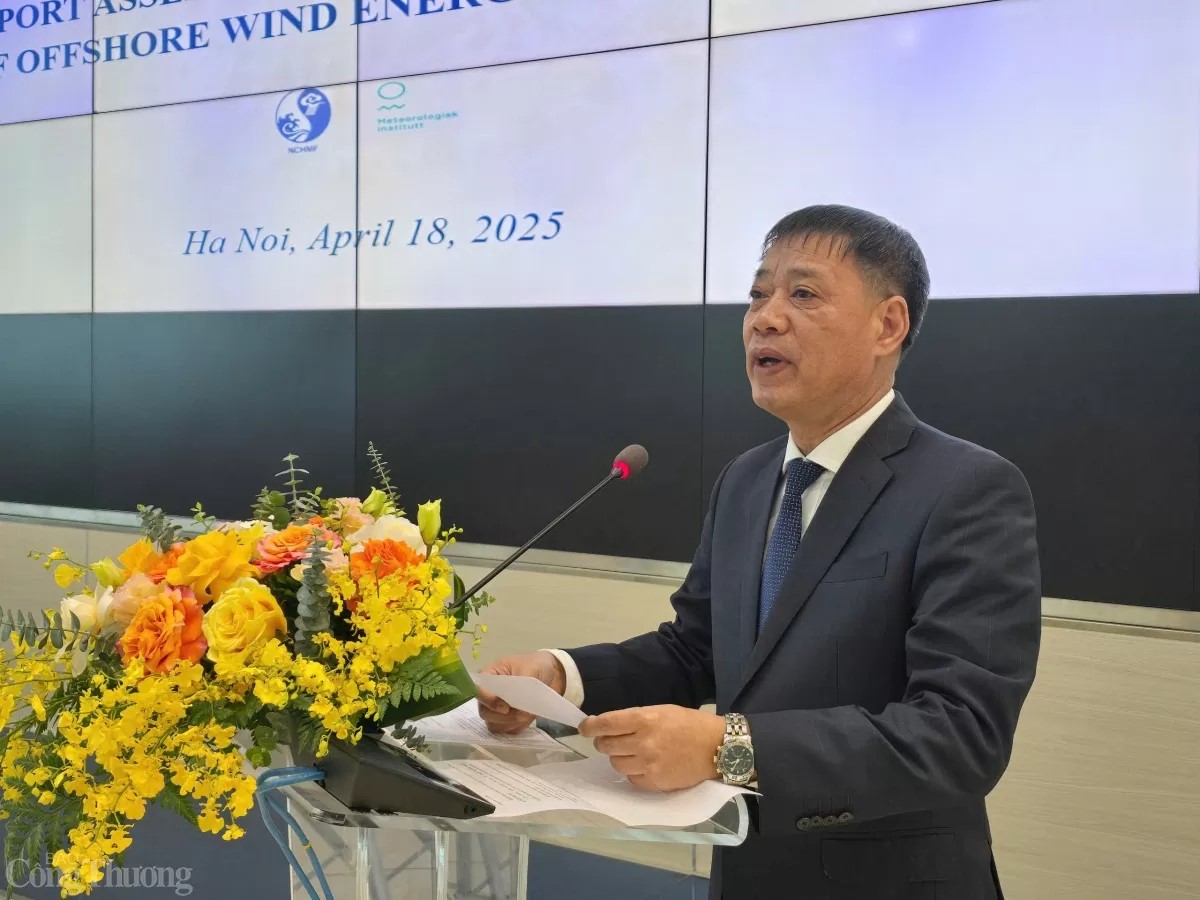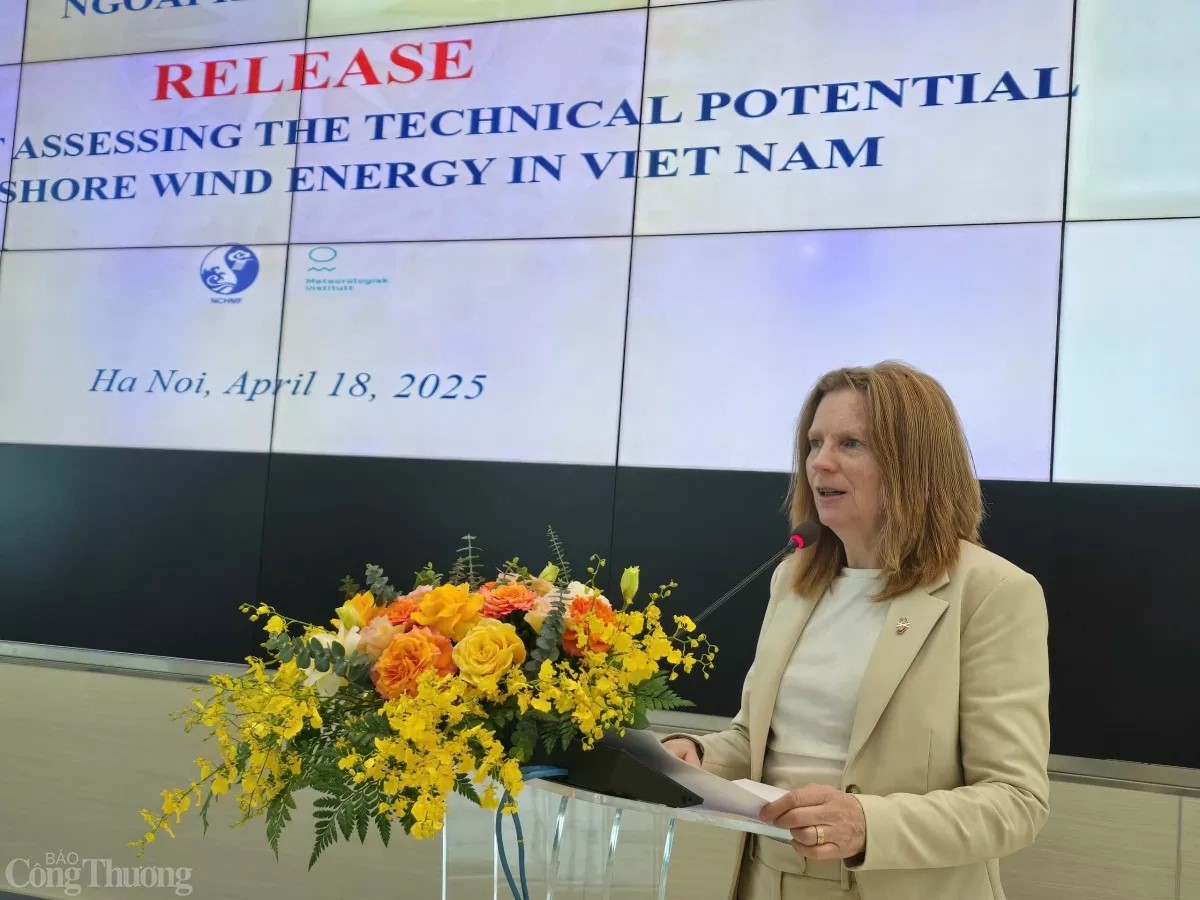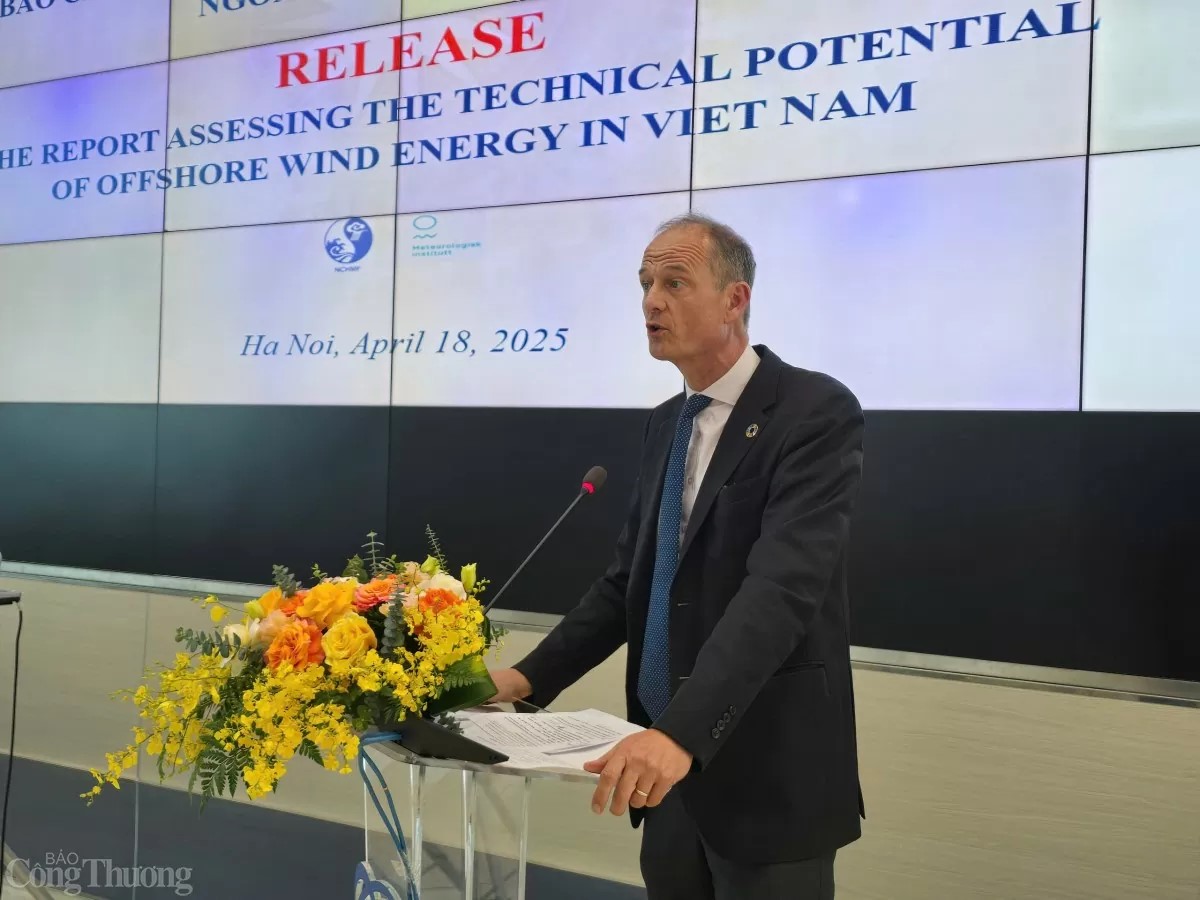On April 18 in Hanoi, the Vietnam Meteorological and Hydrological Administration (VMHA), in collaboration with the United Nations Development Program (UNDP) and the Norwegian Embassy, announced the report on Vietnam’s offshore wind energy technical potential.
The announcement ceremony was attended by Mr. Hoang Duc Cuong, Deputy Director General of VMHA; Mr. Patrick Haverman, Deputy Resident Representative of UNDP in Vietnam; Ms. Mette Møglestue, Deputy Ambassador of Norway to Vietnam; leaders from the National Center for Hydro-Meteorological Forecasting (NCHMF); as well as experts and delegates from the World Bank, the Asian Development Bank (ADB), the German Development Agency (GIZ – German Embassy), Vietnam Electricity (EVN), energy enterprises, and representatives from coastal provinces and cities.

Overview of Report Launch Ceremony
Bac Lieu and Ninh Thuan are in favorable position

Deputy Director General of VMHA Hoang Duc Cuong
After nearly two years of implementation, the report titled "Detailed assessment of wind resource potential in Vietnam’s coastal and offshore areas," conducted by NDHMF with the support of UNDP and the Norwegian Embassy, serves as an important scientific foundation contributing to realizing that strategy.

Deputy Ambassador of Norway to Vietnam Mette Møglestue
Based on the WRF model specifically configured for Vietnam’s maritime areas, the report estimates the technical offshore wind potential across the entire Exclusive Economic Zone (EEZ) at up to 1,068GW (at a height of 100 meters), with the Southern area accounting for nearly 900GW — more than five times that of the Northern region. This figure significantly surpasses previous World Bank assessments (599GW), thanks to the broader survey coverage and the integration of satellite data with actual measurements from coastal, island-based, and offshore buoy stations.
The nearshore area (up to 6 nautical miles offshore), which is more accessible and has lower infrastructure investment costs, also shows substantial technical potential with a total capacity of 57.8GW. Key high-potential clusters are concentrated in Bac Lieu – Ca Mau (over 16GW) and Ninh Thuan – Binh Thuan (over 24GW), while the Northern region records only 0.17GW due to geographical and planning constraints.

Director of NCHMF Mai Van Khiem presents report’s summary
Marine Wind Atlas: Foundational Tool for Planning and Investment
A key contribution of the report is the development of the Vietnam Marine Wind Energy Atlas, which includes 204 detailed maps by month, season, and year, at heights ranging from 10m to 250m. The Atlas presents wind speed, power density, and wind variability coefficient for each 3x3km grid cell across Vietnam’s maritime zones. With its compatibility for integration into GIS platforms, this is an essential tool for investors and regulators in identifying priority development zones, optimizing turbine design, and forecasting power generation.
According to Mr. Patrick Haverman, Deputy Resident Representative of UNDP in Vietnam, “The report released today provides the most detailed offshore wind atlas to date, featuring long-term simulations spanning up to 30 years and high-resolution data. This is a practical tool to support marine spatial planning, the development of the wind power sector, and to attract investment, especially as Vietnam has recently approved its Marine Spatial Planning, Comprehensive Coastal Planning, and the revised Power Development Plan VIII.”

Deputy Resident Representative of UNDP in Vietnam Patrick Haverman
Based on these findings, the report recommends further investment in offshore wind measurement stations at heights above 100 meters, expansion of research into wave and tidal energy, and the establishment of a transparent data-sharing mechanism for marine meteorological and oceanographic information to benefit businesses and researchers alike.
The report “Detailed assessment of wind resource potential in Vietnam’s coastal and offshore areas” marks a significant step forward in addressing longstanding data gaps that have hindered the development of offshore wind power. It not only provides a scientific foundation for planning and investment but also serves as a basis for Vietnam to gradually shape a large-scale offshore wind industry, supporting the country’s commitment to achieving Net Zero emissions by 2050 and enhancing its position on the global renewable energy map.
Translator: Thu Hường
Share